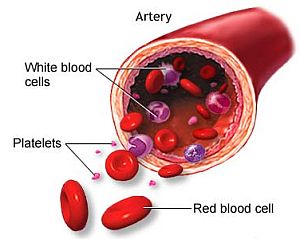CONSTITUENT ADDITIVES
Major platelet gel constituents
- Platelets
- Leukocytes
- Membrane-associated receptors and enzymes
- Growth factors and biologically active molecules
- Active ions (Ca++, Mg++, Mn++, Cu++, Zn++…)
- Fibrin
Constituents of the Plateltex® PRP and PRP-GEL: approved in-vivo use and safety.
CPDA1. This is an anticoagulant solution which includes cytrate, phosphate, dextrose, and adenine.
It is the anticoagulant solution of choice to collect the blood from blood donors. It is a physiologically balanced solution allowing extended shelf-life of the donated blood prior being transfused to the patient.
As a constituent of blood donated with the intended use of being transfused CPDA1 is word-wide approved for in-vivo use in humans.
ACD. This is an anticoagulant solution which includes cytrate, phosphate, dextrose.
It is the anticoagulant solution of choice to collect the patient’s blood for screening and diagnostic tests to be performed on plasma. ACD does not interfere over the function and the integrity of blood constituents.
Platelets are not stress-activated by collecting blood in ACD-containing tubes. ACD is the anticoagulant solution of choice also for extracorporeal blood management in the operatory room, or in large volume blood donations taken through cell separators, or in blood-exchange therapeutic procedures. If infused in vivo at a relatively high infusion rate and in large amounts, hypocalcemia can develop. However, ACD is metabolized in a few minutes by human body. ACD-induced hypocalcemia in patients undergoing extracorporeal blood management is simply prevented or corrected by antagonist infusion (calcium cytrate or calcium gluconate) infusion.
Calcium Gluconate. It is administered intravenously to overcome hypocalcemia whatever the cause. If it is infused quickly, sensation of face flushing occurs. No interaction or incompatibility with other drugs has been described.
Batroxobin. It is a procoagulant drug. Each vial contains the equivalent of 1 ± 0.2 international thrombinic units. Route of administration: intravenously or through intra muscle injection. Systemic administration of batroxobin induces consumption of fibrinogen, a major plasma protein involved in clot formation; such fibrinogen consumption reduces a prothrombotic state. If administered locally, it exerts a quick hemostatic effect, without any adverse reaction.
Platelets. Platelet-rich plasma (PRP) or concentrated platelets resuspended in anticoagulant solution or synthetic media are commonly transfused intravenously to thrpmbocytopenic patients. Usually, for local administration of PRP or PRP-GEL autologous (from the patient her/him-self) platelets are used.
All constituents are allowed for human therapy. PRP and PRP-GEL for topical (local) use must be administered according to provided written protocols and instructions.